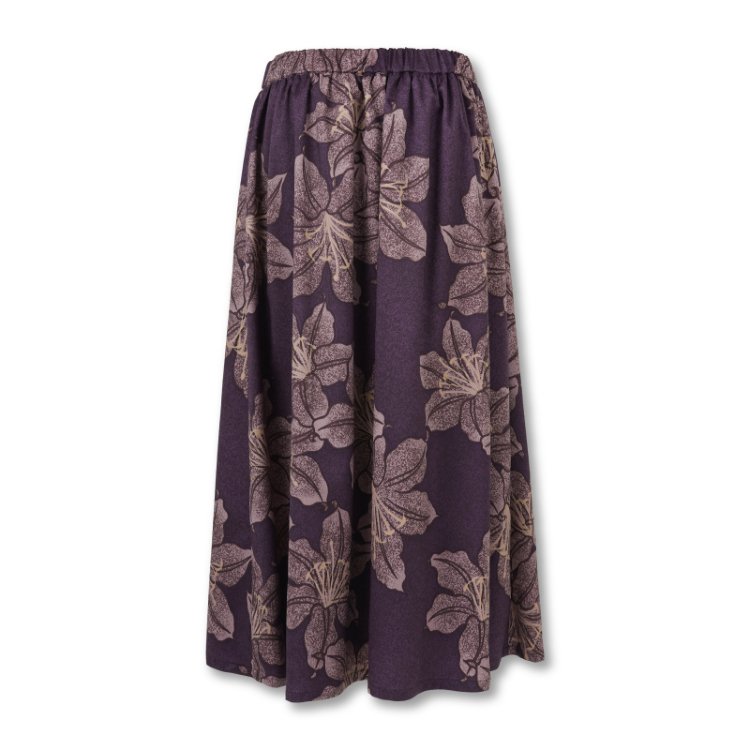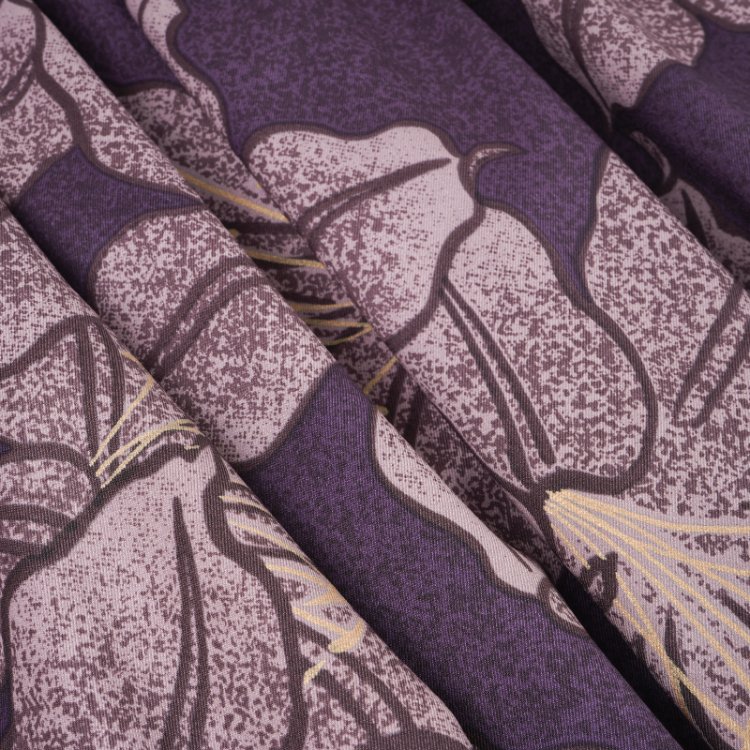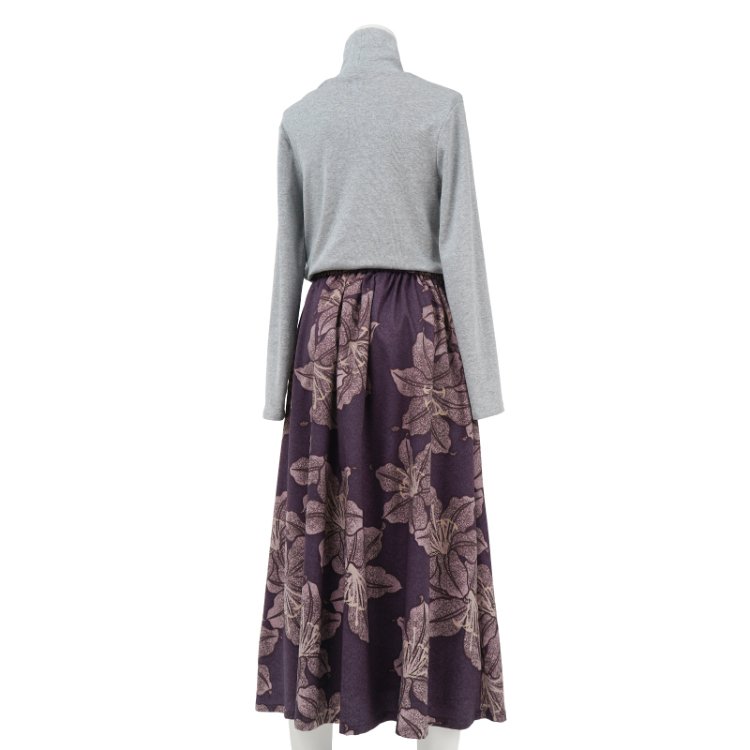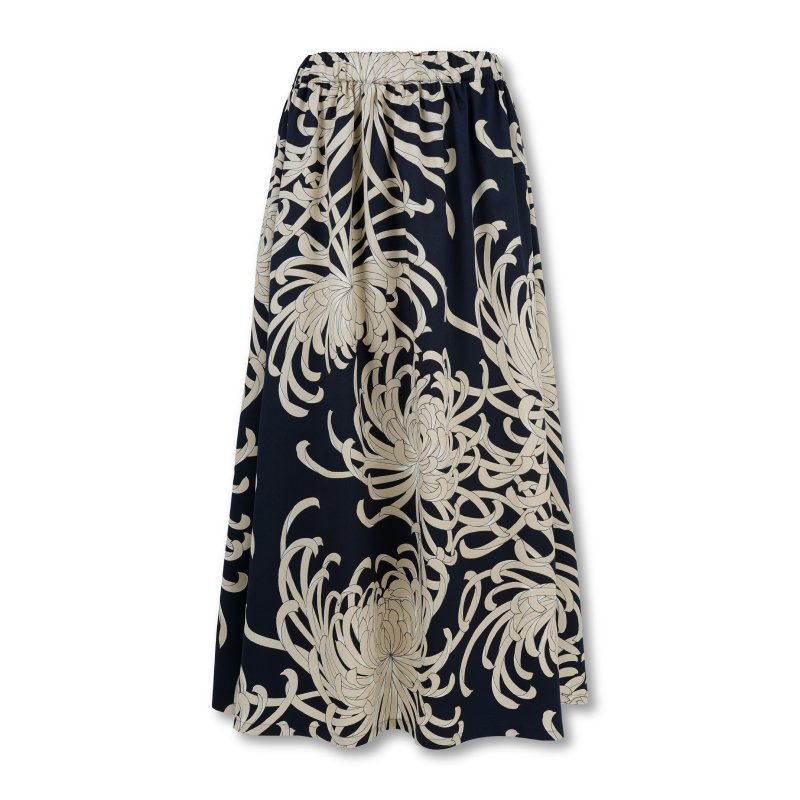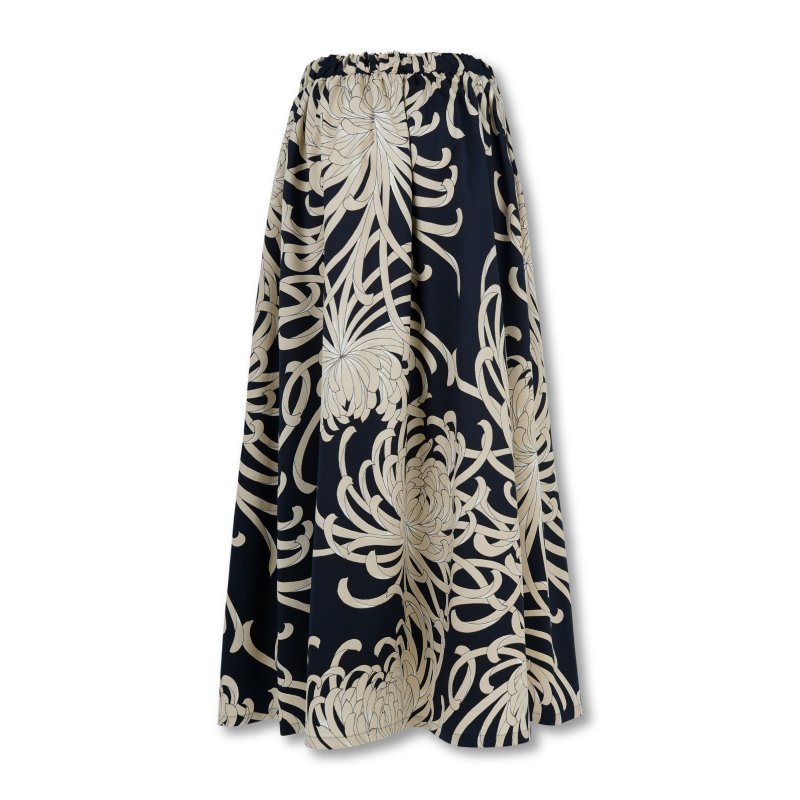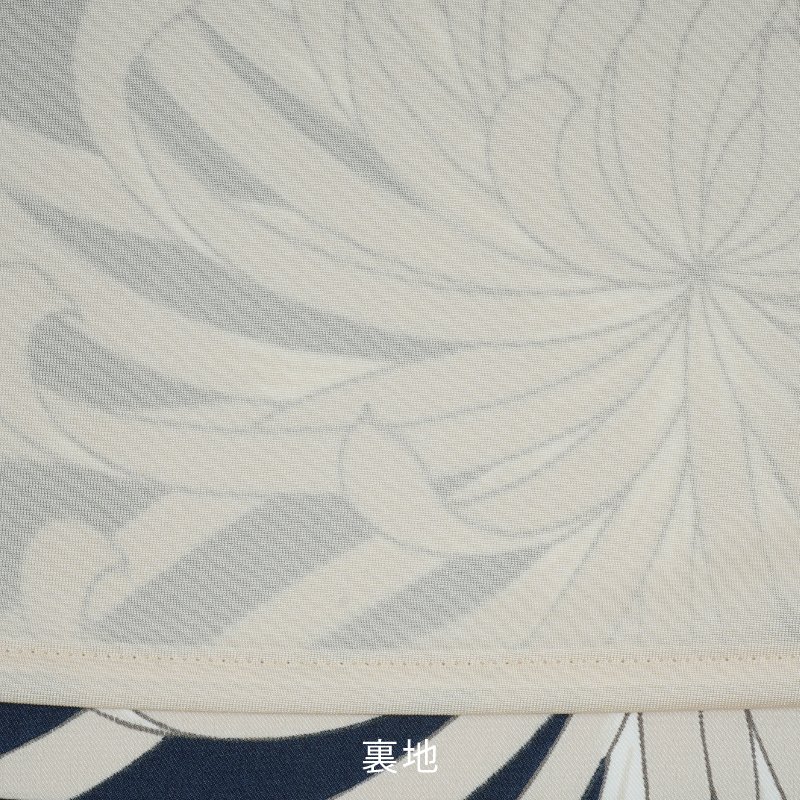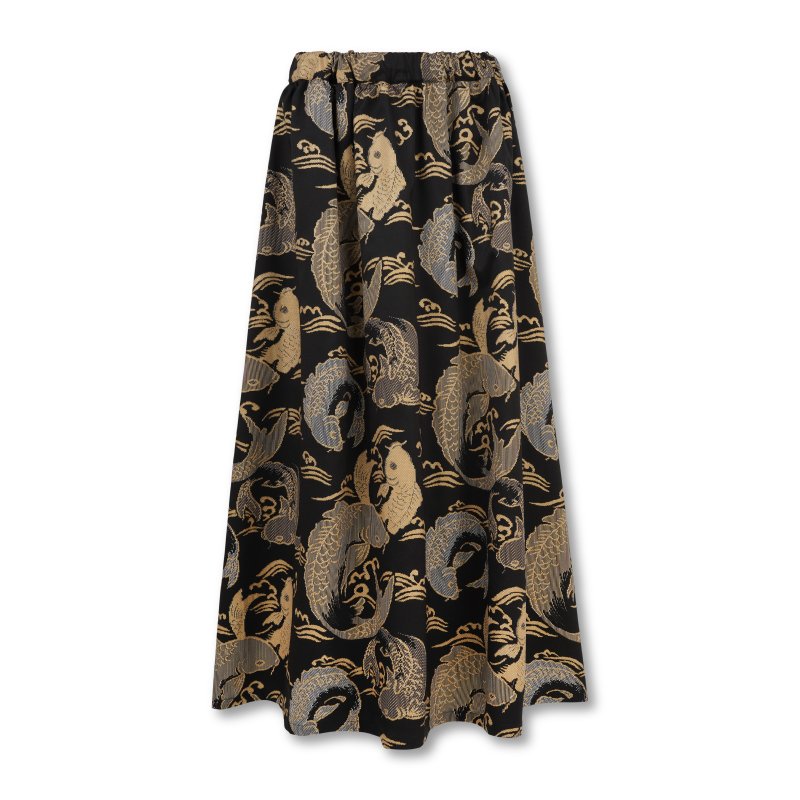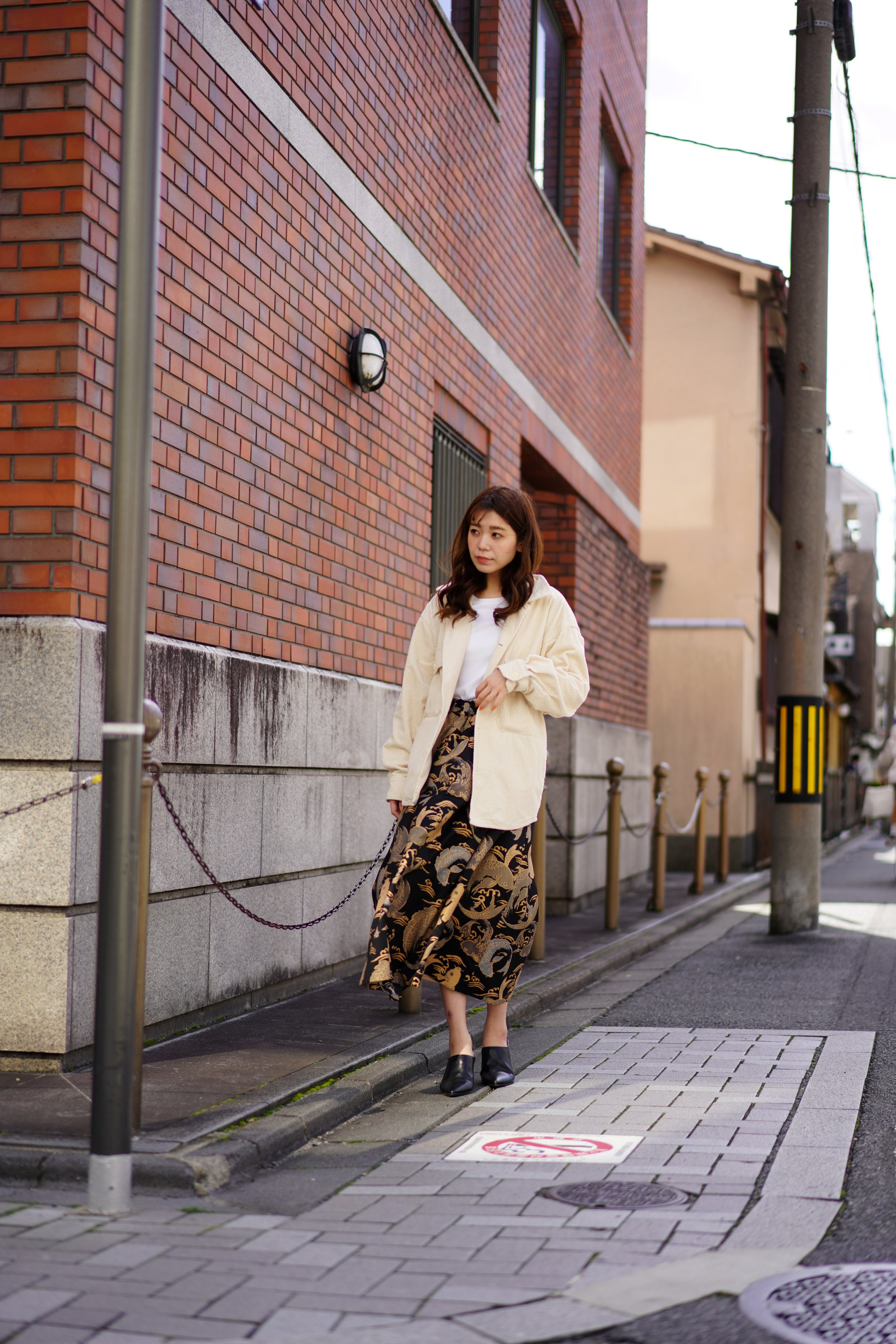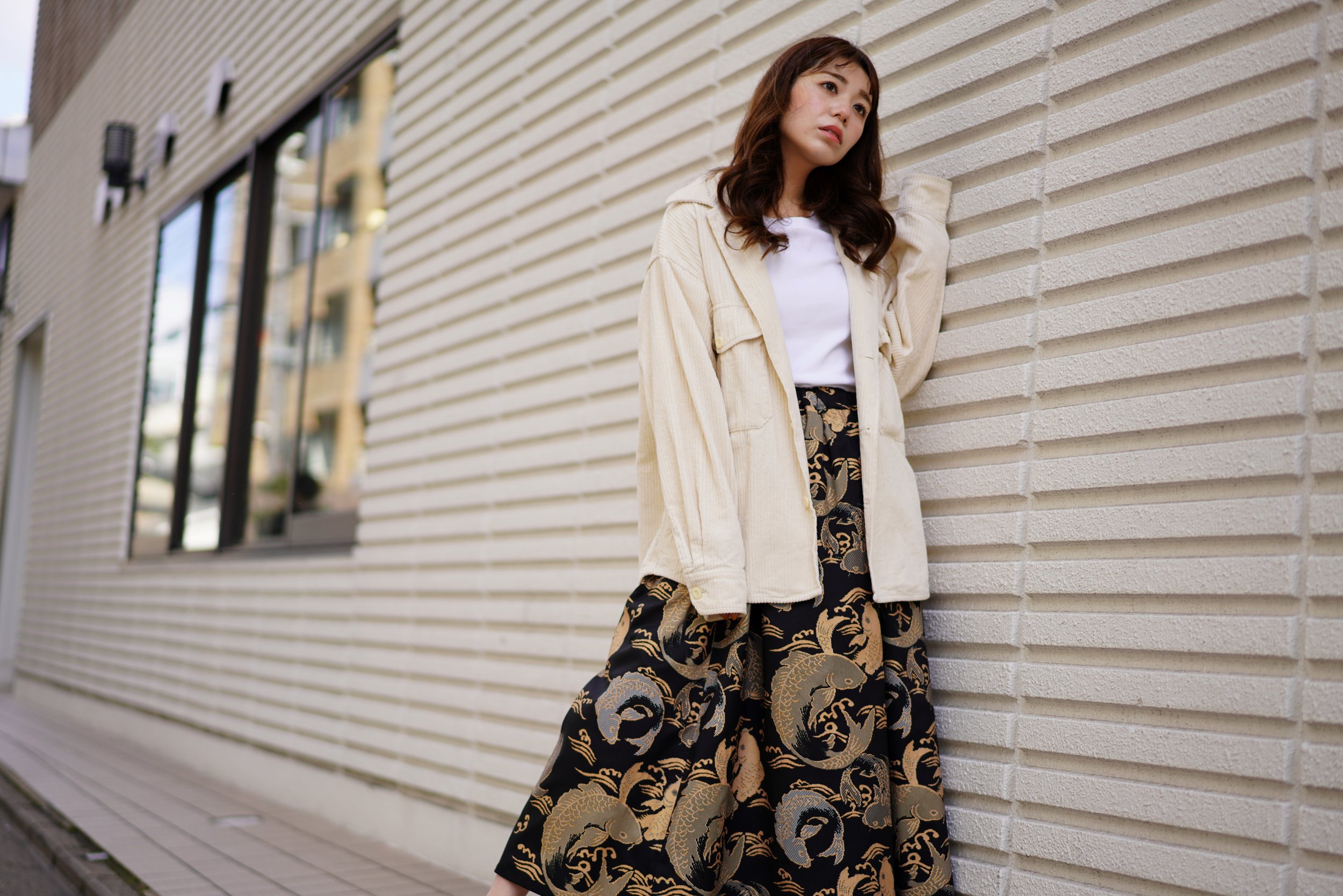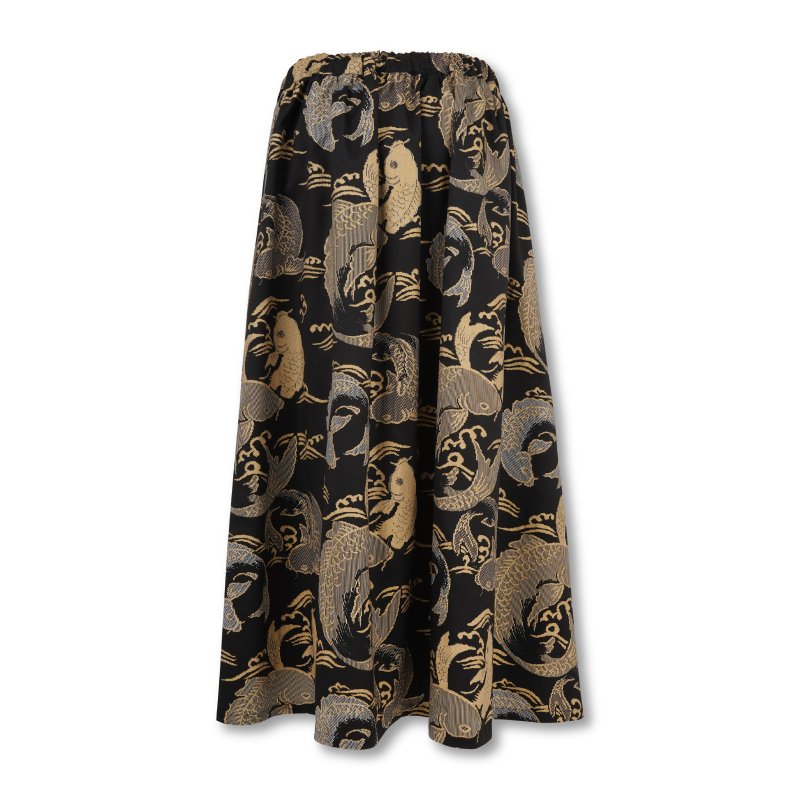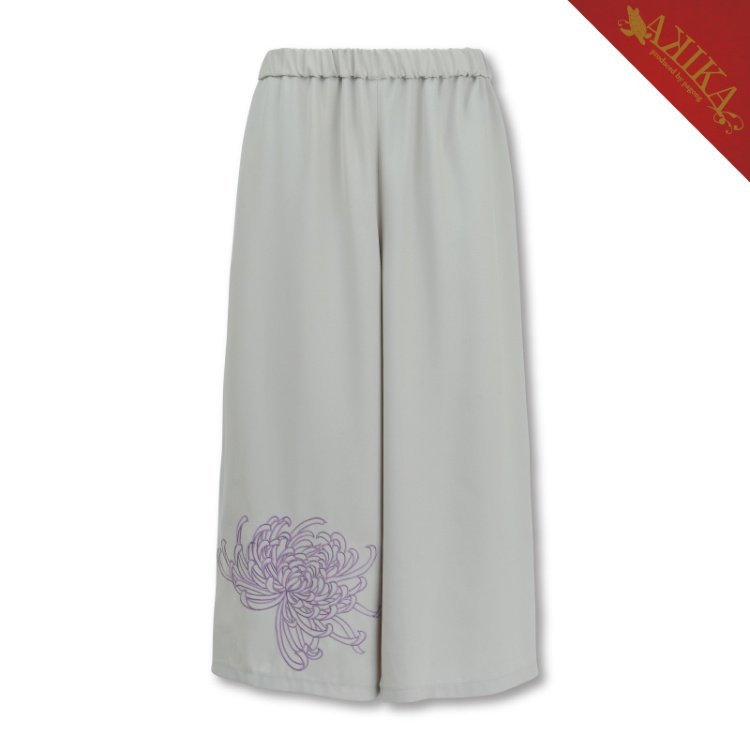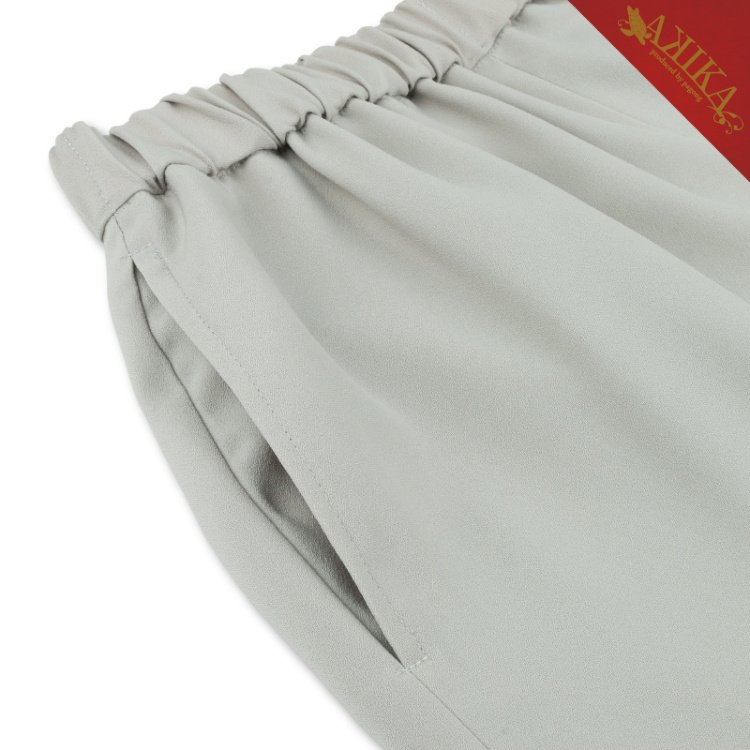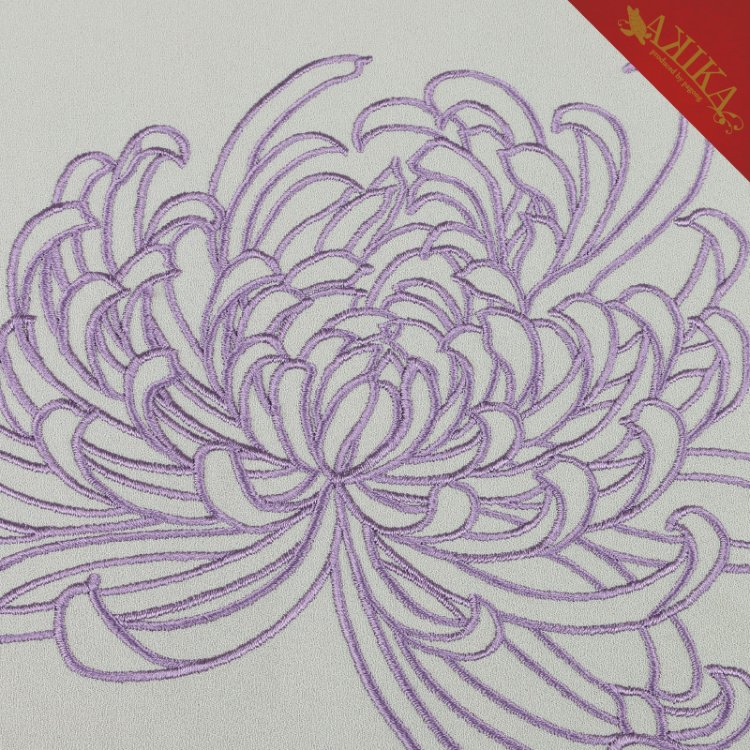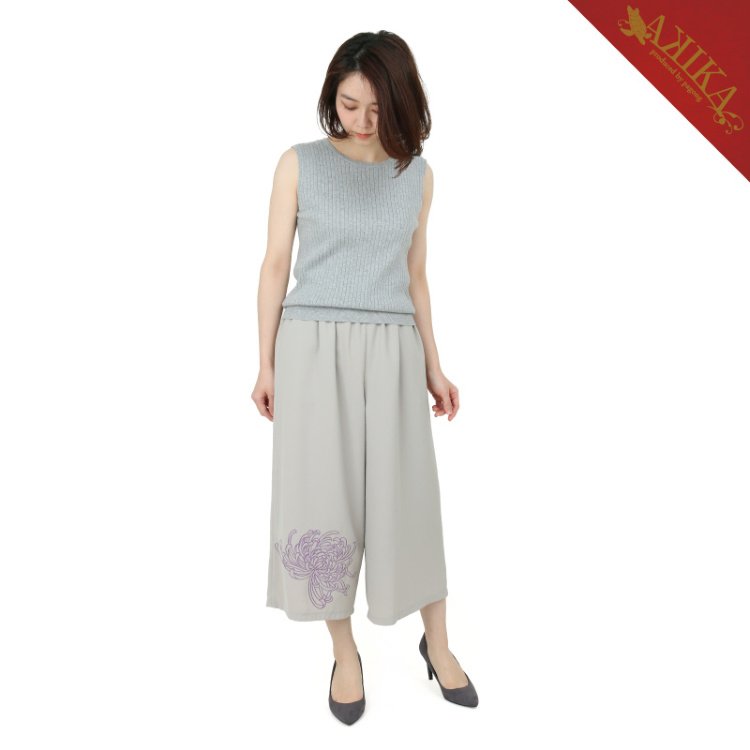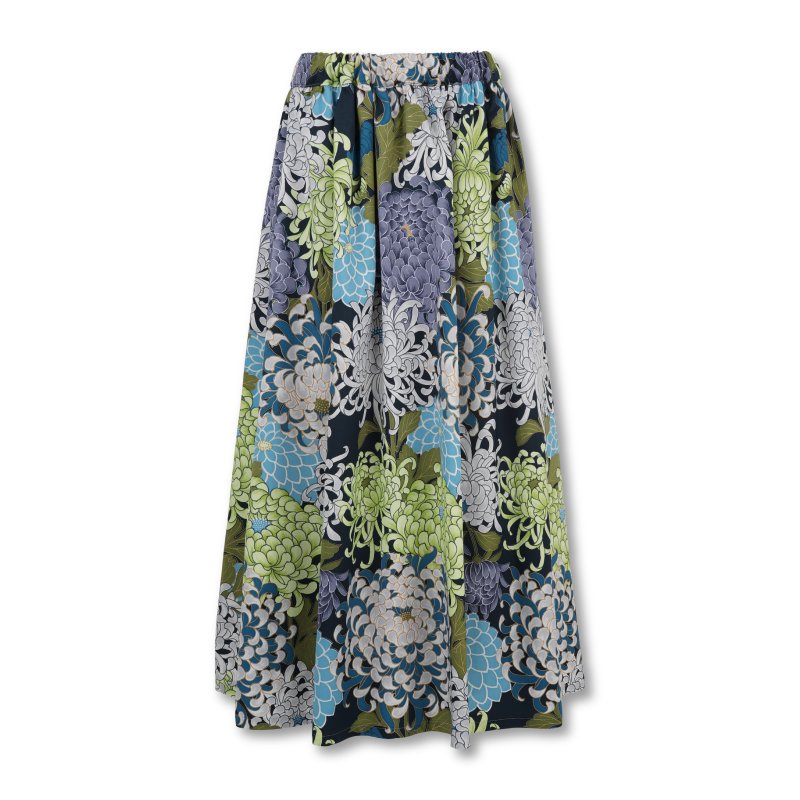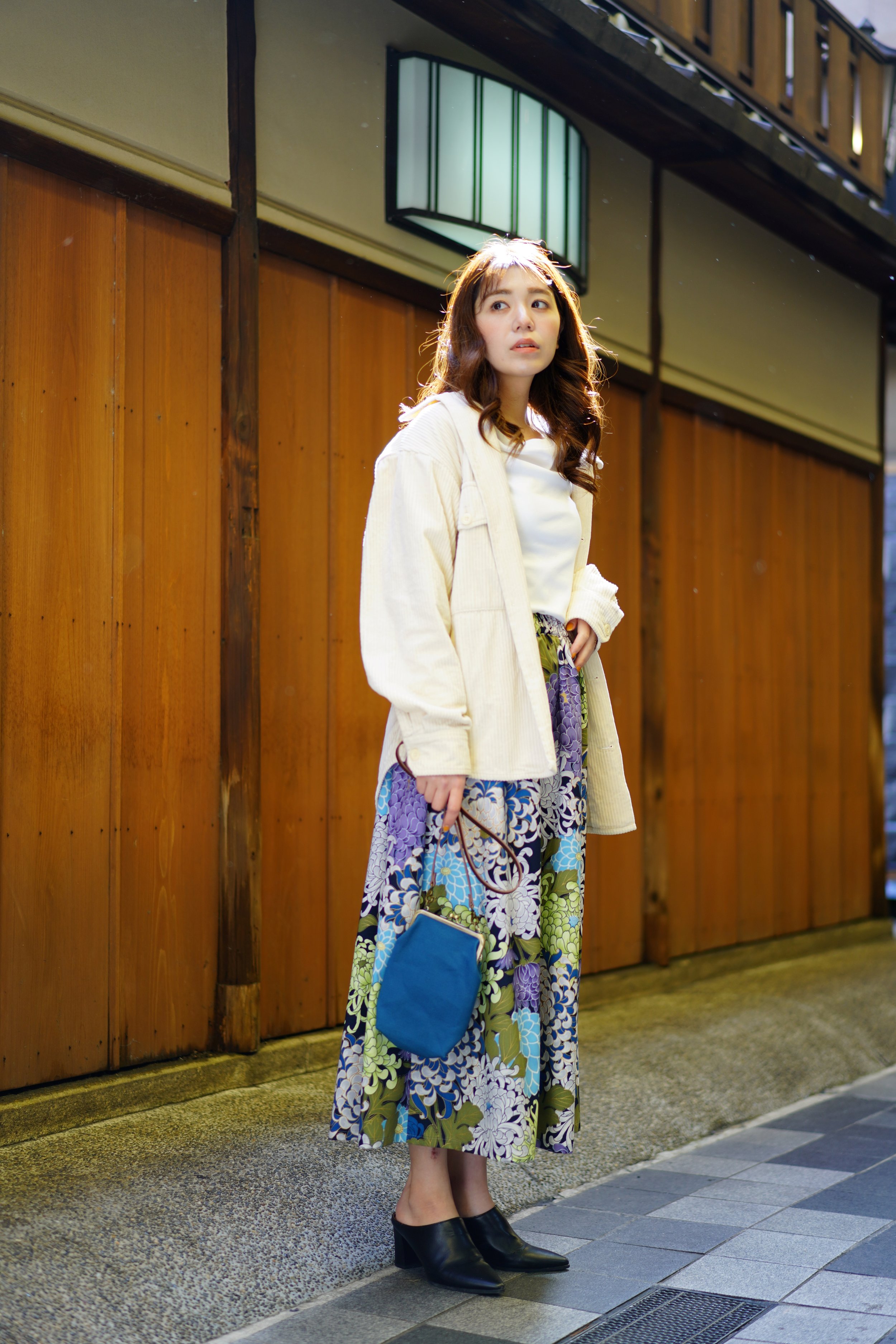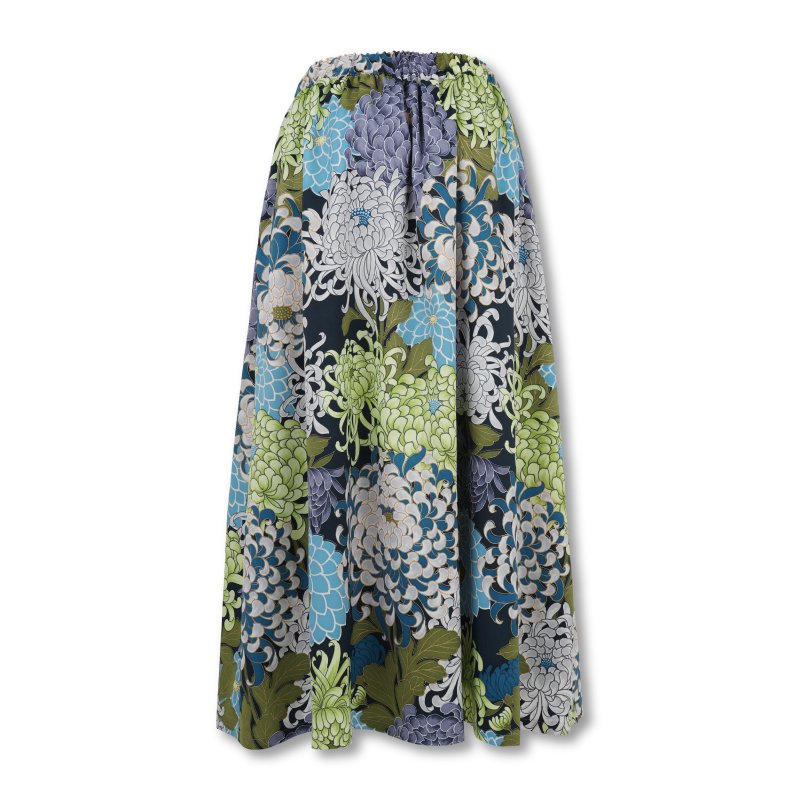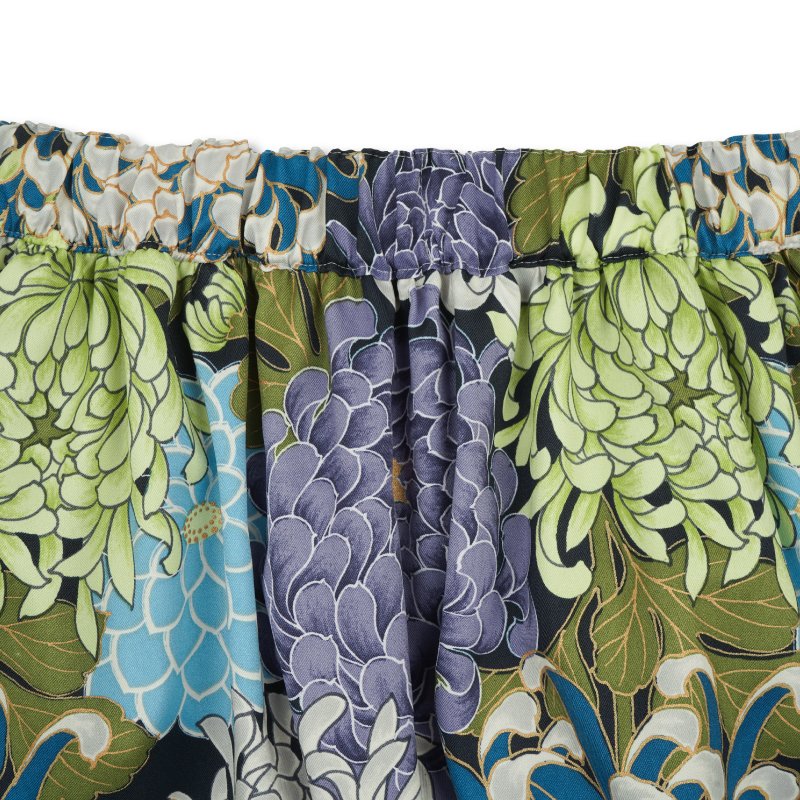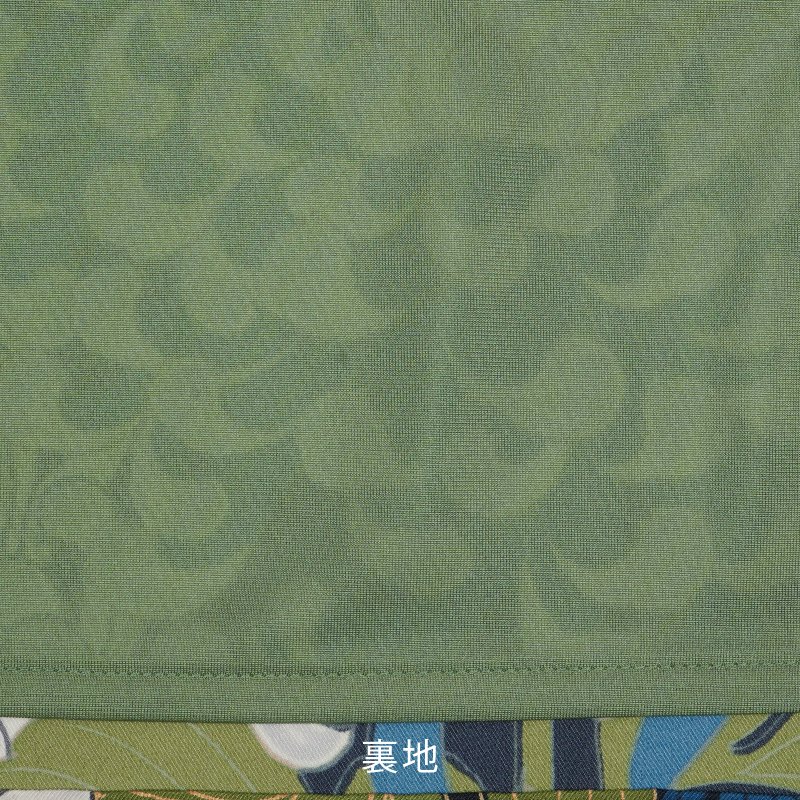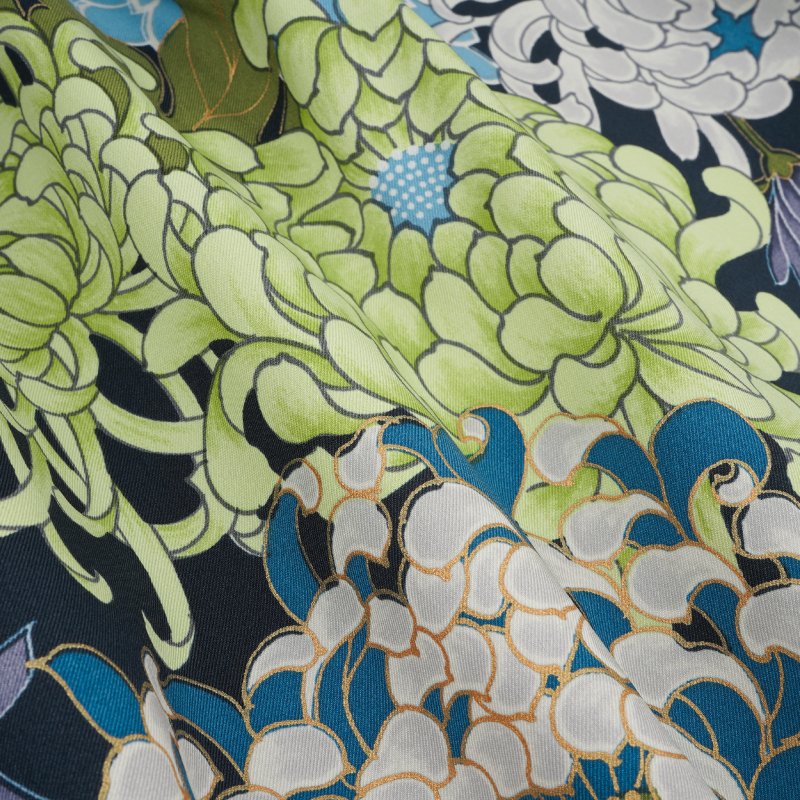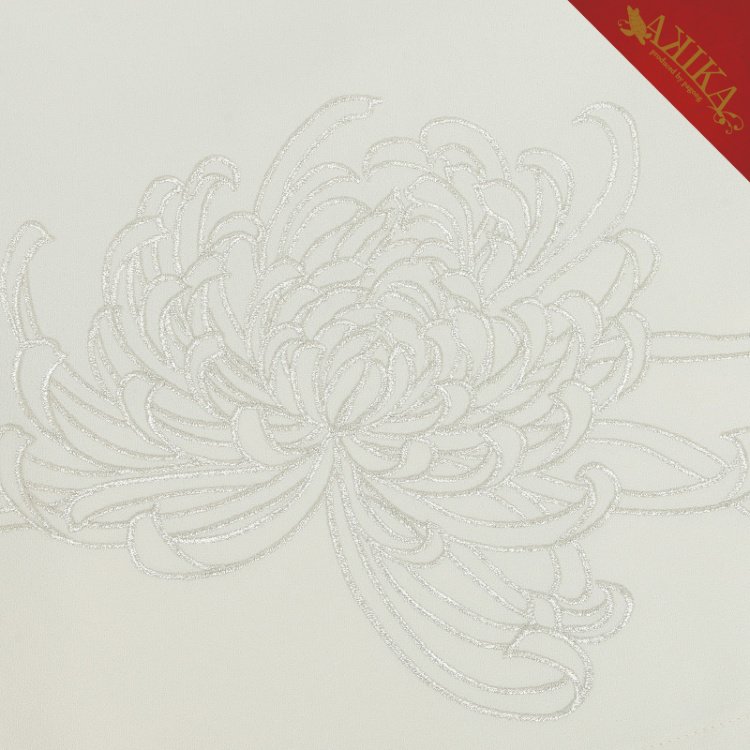" Lily " Long Skirt
Color / Purple Care Instruction
Japanese name/ 百合ちらし (Yuri Chirashi)
-About-
Interestingly, lilies are not frequently used as motifs, despite their beauty and cultural significance. This scarcity can be traced back to the late Meiji period when Western flowers began to gain popularity in Japanese design. During this time, an artistic shift occurred, leading to the emergence of sketch-style designs that incorporated various floral elements.
From the Taisho period onward, lilies started to be embraced as motifs in kimono fashion, reflecting a cherished blend of Japanese and Western aesthetics. This era saw a marked preference for luxurious and elaborate designs, resulting in a tendency to portray lilies in a realistic manner rather than as stylized patterns.
One standout example of this floral representation is the "lily flyer" pattern, where a multitude of lilies is artfully scattered across the fabric. This design not only enhances the visual appeal of the kimono but also conveys a sense of elegance and grace to the wearer, making it a captivating choice for those seeking to express beauty through traditional attire.
Size (inch)
Waist 23.5
Length 33.5
・100% Polyester
・Made in Japan
・Hand-wash
・Hang to dry
・Use pressing cloth to iron
・Currency : US Dollar (USD)
Color / Purple Care Instruction
Japanese name/ 百合ちらし (Yuri Chirashi)
-About-
Interestingly, lilies are not frequently used as motifs, despite their beauty and cultural significance. This scarcity can be traced back to the late Meiji period when Western flowers began to gain popularity in Japanese design. During this time, an artistic shift occurred, leading to the emergence of sketch-style designs that incorporated various floral elements.
From the Taisho period onward, lilies started to be embraced as motifs in kimono fashion, reflecting a cherished blend of Japanese and Western aesthetics. This era saw a marked preference for luxurious and elaborate designs, resulting in a tendency to portray lilies in a realistic manner rather than as stylized patterns.
One standout example of this floral representation is the "lily flyer" pattern, where a multitude of lilies is artfully scattered across the fabric. This design not only enhances the visual appeal of the kimono but also conveys a sense of elegance and grace to the wearer, making it a captivating choice for those seeking to express beauty through traditional attire.
Size (inch)
Waist 23.5
Length 33.5
・100% Polyester
・Made in Japan
・Hand-wash
・Hang to dry
・Use pressing cloth to iron
・Currency : US Dollar (USD)


Color / Purple Care Instruction
Japanese name/ 百合ちらし (Yuri Chirashi)
-About-
Interestingly, lilies are not frequently used as motifs, despite their beauty and cultural significance. This scarcity can be traced back to the late Meiji period when Western flowers began to gain popularity in Japanese design. During this time, an artistic shift occurred, leading to the emergence of sketch-style designs that incorporated various floral elements.
From the Taisho period onward, lilies started to be embraced as motifs in kimono fashion, reflecting a cherished blend of Japanese and Western aesthetics. This era saw a marked preference for luxurious and elaborate designs, resulting in a tendency to portray lilies in a realistic manner rather than as stylized patterns.
One standout example of this floral representation is the "lily flyer" pattern, where a multitude of lilies is artfully scattered across the fabric. This design not only enhances the visual appeal of the kimono but also conveys a sense of elegance and grace to the wearer, making it a captivating choice for those seeking to express beauty through traditional attire.
Size (inch)
Waist 23.5
Length 33.5
・100% Polyester
・Made in Japan
・Hand-wash
・Hang to dry
・Use pressing cloth to iron
・Currency : US Dollar (USD)


